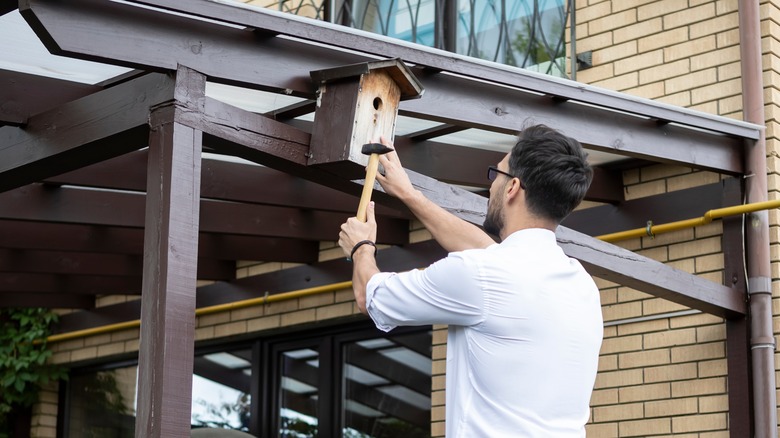Attract This Crested Woodland Bird To Keep Flies And Pests Out Of Your Yard
Enjoying your yard can quickly turn into a battle against flies, mosquitoes, and other pesky insects. Whether you're grilling up some burgers or planting your favorite flowers, these uninvited guests can seriously ruin the mood. While there are many ways to tackle these bothersome bugs, ranging from chemical sprays to citronella candles, there's another way to repel bugs naturally that might just surprise you: attracting birds to your yard. Specifically, the great crested flycatcher can be your new best friend in keeping pests at bay.
The great crested flycatcher is known for its striking appearance and voracious appetite for all sorts of insects. Sporting a beautiful combination of shades like olive-green, yellow, and gray, these North American natives can be found all across the US, particularly in wooded areas and open woodlands. The great crested flycatcher is a migratory bird that usually spends its winters in Central America, meaning they make long trips back and forth, potentially needing a resting or nesting spot right in your backyard. These birds are especially fond of catching flies, beetles, and even spiders, making them the perfect allies in your war against yard pests. That means attracting these birds can potentially reduce the need for chemical pesticides, which is a win for both your garden and the environment.
How to attract great crested flycatchers to your yard
It turns out that attracting a great crested flycatcher is fairly easy. Like other cavity-nesting birds, they often struggle to find suitable nesting sites, especially in areas where natural tree holes are scarce. And that is where you come in!
When putting up a nest box, timing is crucial. Aim to have it installed well before the breeding season begins in early April to July, giving the birds ample time to discover and claim their new home. The nest box itself should be mounted about 10 to 20 feet above the ground in a space they can easily reach. Clear flight paths to the box opening are essential, as these birds need unobstructed access to their nests. To protect the eggs and young birds from predators, attaching a guard to the nest box is a smart move that helps ensure the safety and success of the nesting pair.
Making sure water is readily available is also important, so make sure to add water features to attract them. Birds, like humans, need to stay hydrated, especially during the warmer months or migratory periods. Also, consider planting native shrubs and trees that provide shelter and food for the great crested flycatcher. Plants like elderberry, dogwood, and serviceberry offer both protection and a food source, making your yard even more appealing to these feathered friends. And don't forget to avoid using pesticides, as they can harm the birds and their food supply.

